‘Let's not..’, 2019
Mixed media, at MARTINETZ
So similar and yet in the details, still so different: longings and desires in variously designed spaces of domination and submission. One of many partially concealed zones within our interwoven societies. Constituted by deep trust, it is a small parallel world that tests final boundaries and fulfils first wishes.
The dominatrix enters her stage: a sparse cell, a tiled hospital room, a kennel to tame the beasts. The game quickly becomes serious for the people who entrust themselves to it and who transform themselves under its leadership. Pain and pleasure in a thousand disguises create a new reality. Nerves tense, limbs bound, sweat runs across the skin, for minutes and hours that don’t want to end.
The other world, that of the offices and the streets, falls away behind bars and walls. The daylight disappears. The sun is overshadowed by the red light in a dark chamber or by the bright neon in a treatment room, a denser light intensified by pain and humiliation. Needles drill into the most sensitive places, weights and clamps, stretch and press – blows crack down and break the final reserve: the one who is delivered is the one who surrenders themselves. „Let us do what we should not do…“
Only in the flames of its own destruction can the Phoenix awaken to new life. Fire purifies the ore, burns away all superfluous things. The smith is master of her trade. In a dark, wild forest she knows the way and leads her tamed prey from their fears to a clearing, brightly lit, in a thousand colours. Isn’t that the innermost reality for those who surrender to passion? A place of healing, of connection with one’s own reason, strictly and consistently guided: in everything, not alone.
Through intensive research, Selma Gültoprak deals artistically with this circle of sexual-erotic activities that is determined, in this case, by self-confident women. She conducted long personal conversations with experienced dominatrices both in Germany and Los Angeles, in doing so the artist immersed herself in a multi-layered world that, in addition to its hedonistic aspects, possesses complex psychological dimensions. Beyond medical methods and practices, they enable their clients, regardless of age, social origin or gender, to satisfy deep-seated needs that have long been regarded as ‘pathological’ and ‘perverse’. In recognition of these therapeutic achievements, Selma Gültoprak dedicates the main piece in the exhibition to the dominatrices in the form of her ‘Love Monument’. The artist has assembled around 900 bottles on a kind of stage that is composed of 26 steps, each bottle is filled with coloured oil of varying hues and shades and filled with various amounts. Their labels refer to the most diverse, individual forms of SM, which in turn can be freely combined with each other to create new contexts. Although the front of the piece is clearly defined, it is also possible to step behind this stage like construction, resulting not only in different perspectives on the work itself but also on the other visitors to the exhibition. Looking through the bottles is reminiscent of stained glass windows found in churches, creating a subliminal mystical atmosphere. This also applies to the construction of the stage, as it evokes the structure on which sacrificial candles in sacred buildings are placed.
Over the course of her engagement with this topic, Selma Gültoprak has systematically tapped into an extensive vocabulary covering several categories. On the one hand, the roles or self designations of the dominatrices can be found: Mistress, Madame, Pet Trainer and on the other hand the names that their clients receive during the game: White Rabbit, Property, Good Puppy. They are names that are associated with a wide variety of fantasies and convey an alternative self-image.
The artist also names the techniques and tools: Nipple Play, Bondage, Gates of Hell, Catheter, the imaginary scenarios in which the activities take place: the Soundproofed Garage, the White Room or the Black Corridor – and finally the physical and psychological effects and the communicative forms of expression: Humiliation, Total Bliss, Moaning, Crying.
The whole thing is more than an exotic cosmos with its own kind of mythology, above all, it is an experimental place that playfully questions social roles and conventions through new and unique rules. Here the work ‘Bag’ represents the possible forms of reversal and transformation. The artist utilised a leather vest from a rocker, also known as ‘Kutte’ (cowl), something that usually functions as a symbol of rank and serves as an indication of belonging to a club. She removed the patches, added eyelets, chains and straps creating a handbag with a design inspired by Gucci. On the front, the logo of the brand in the form of two interlocking majuscules of the letter ‚G‘ can be found. Here, the ultimate symbol of a specific form and idea of masculinity is transformed into a no less explicitly coded object, an equally specific form of femininity. At the end, the leather vest is no longer recognisable.
When selecting the model, the artist deliberately chose a bag that one of the dominatrixes named on a wish list published on her website. These are objects that can be gifted to them by their clients instead of or in addition to donations of money for their services. These desired items, often accessories and garments, are sometimes directly linked to mail-order companies that offer their goods online.
The picture series ‘Snot’ also plays with the motif of transformation. Using collage and montage, Selma Gültoprak transformed illustrations of figures from Mark Twain’s stories about Huckleberry Finn: half-human, half-animal. They refer to those scenarios in which the passive part is playfully transformed into an animal, for example into a dog or a pony, they must behave accordingly and are then treated accordingly. The dominatrix, Madame Margherite has a clear message for her human-animal test subjects, quoted on a metal banner: don’t apologize, correct your behaviour. The coloured magnetic letters, borrowed from the world of children, follow along the narrow metal strip that is made from a shock absorber, its winding shape is reminiscent of calligraphy. As in childhood, the theme is education, which at the time was still in competition with play. Now, in the dominatrix‘s studio, play and education finally coincide and are reconciled with each other.
On the way back to the everyday world, may the reborn Phoenix ask himself „Do I drive or am I driven“, am I the one driving things or am I the driven one? Do I lead or am I led/seduced? Was it a game or is it serious? Selma Gültoprak has found an unusual image for this essential question, a question which fundamentally concerns all areas of human activity and life: a handle made out of chocolate, it is low down on the wall, just a little above the floor. What is the actual function of things and the actions associated with them? What support does a handle offer? And what support does the chocolate provide?
Thomas W. Kuhn, Tiergarten 2019


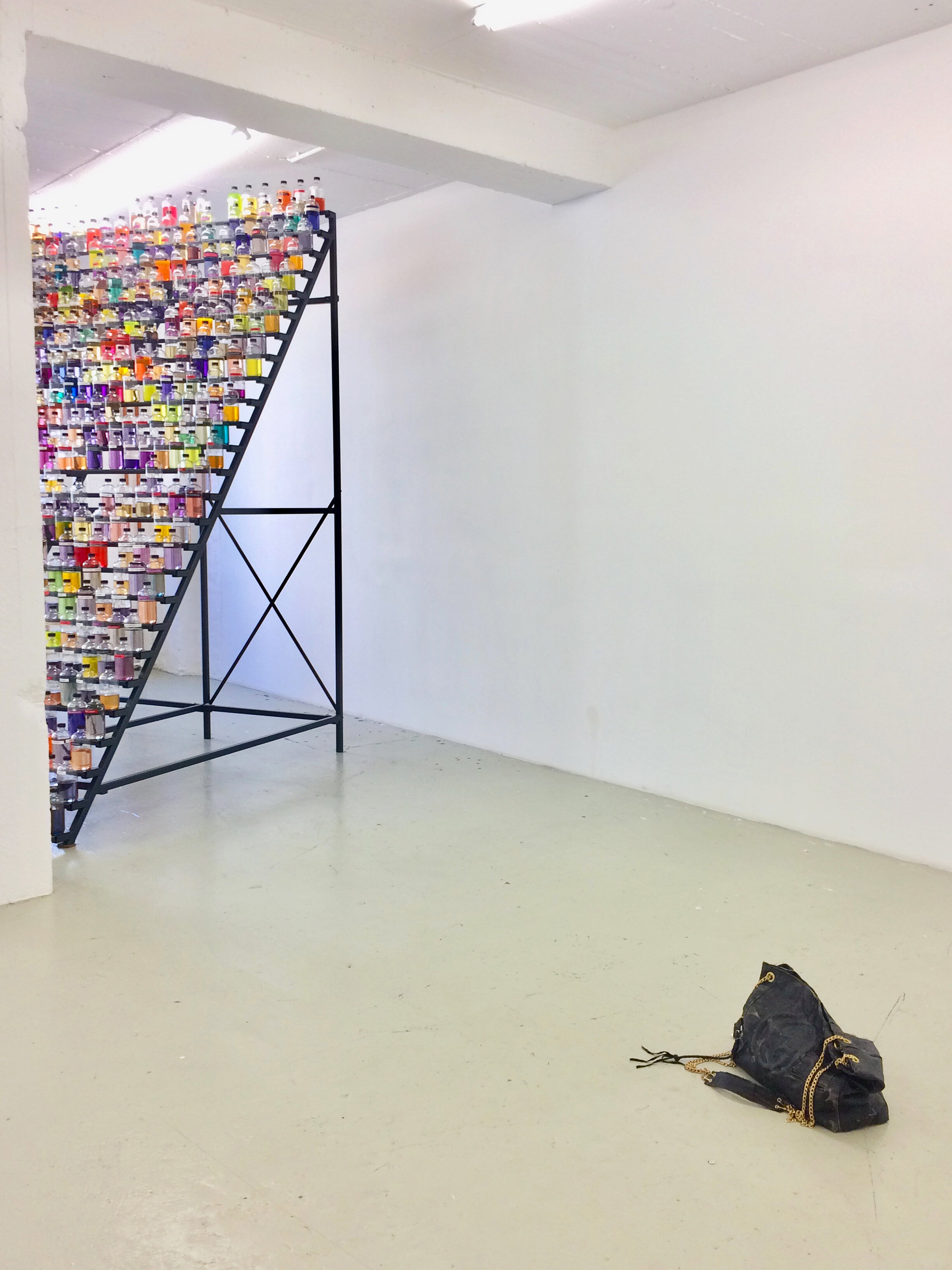
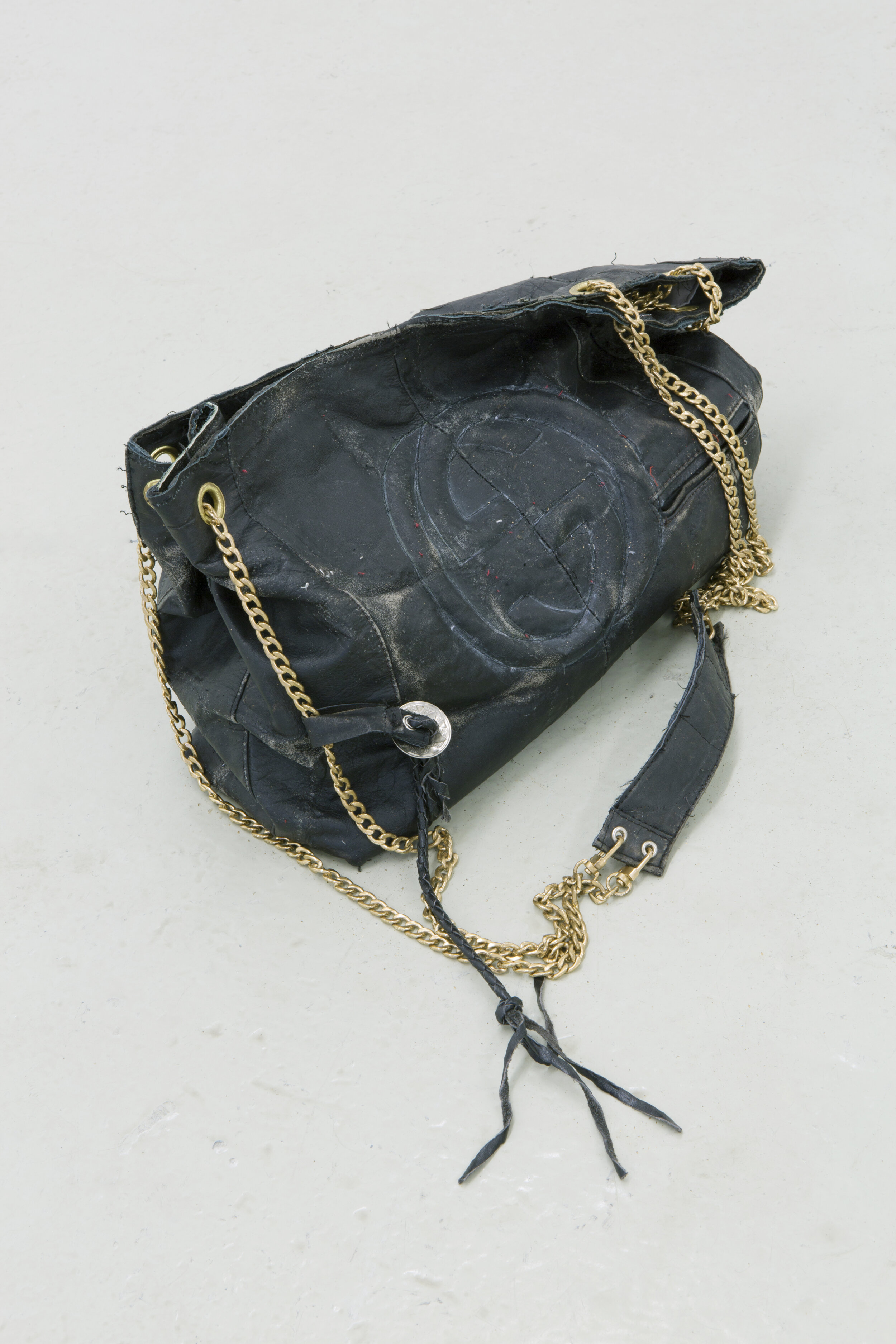
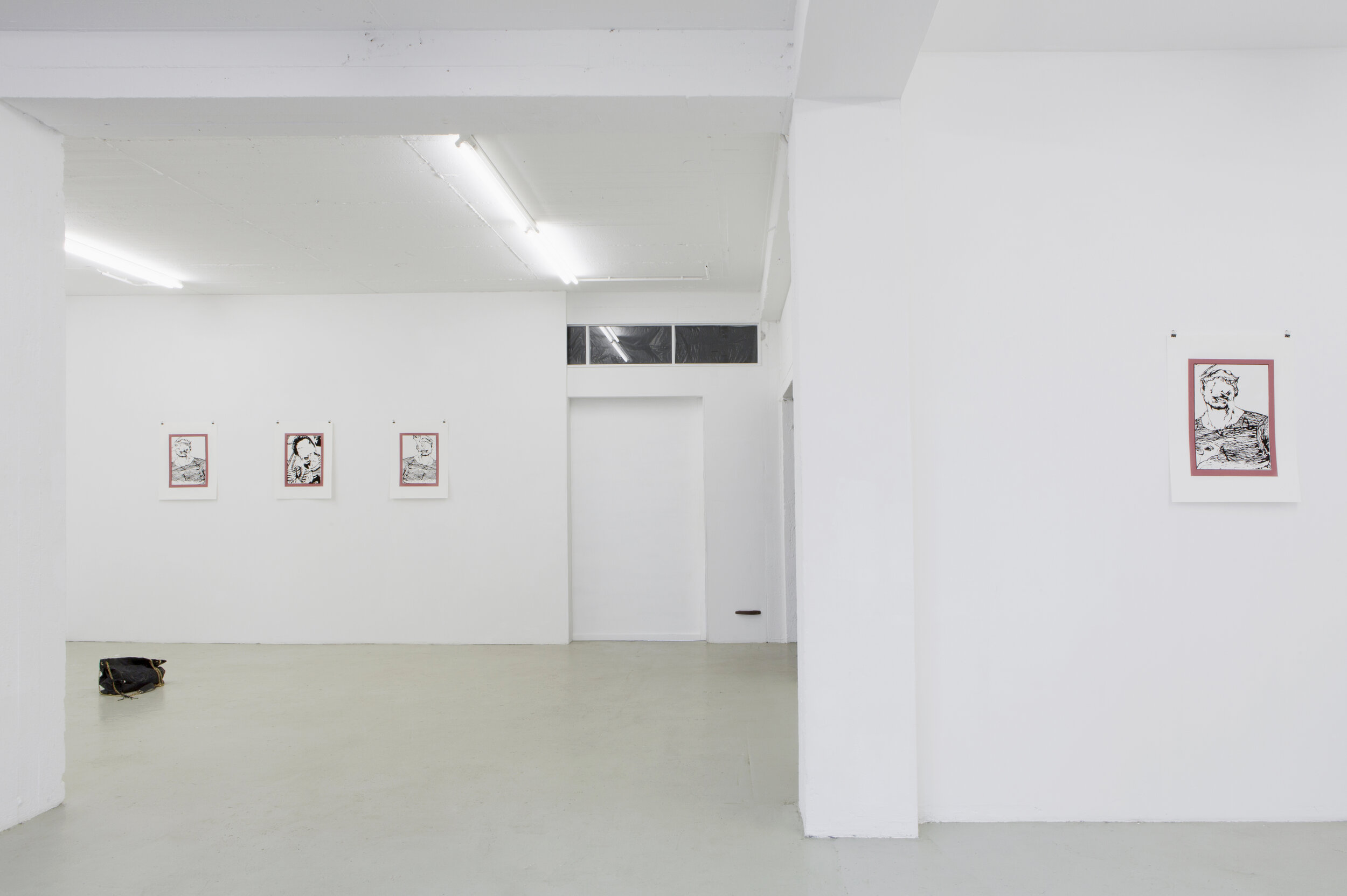
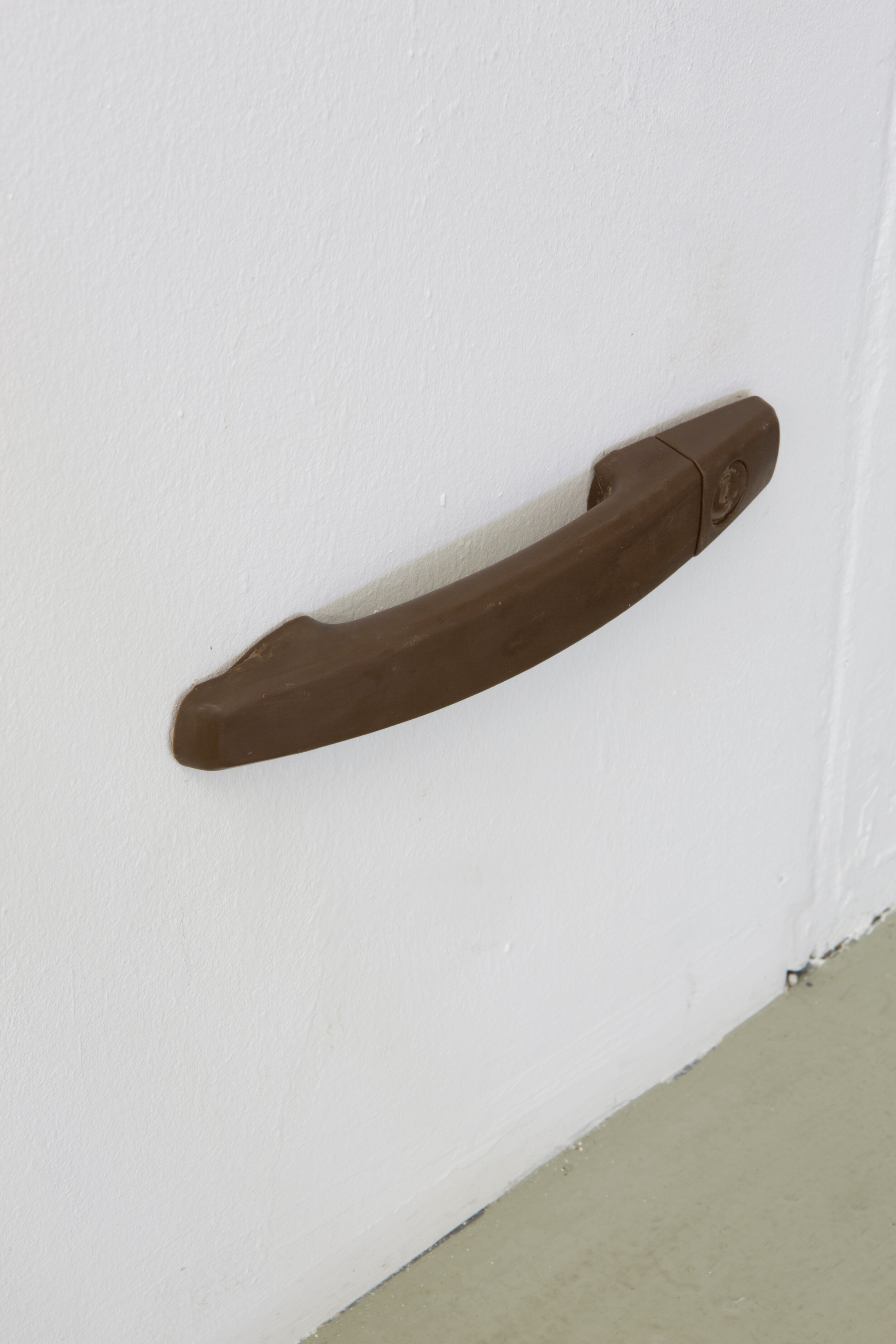
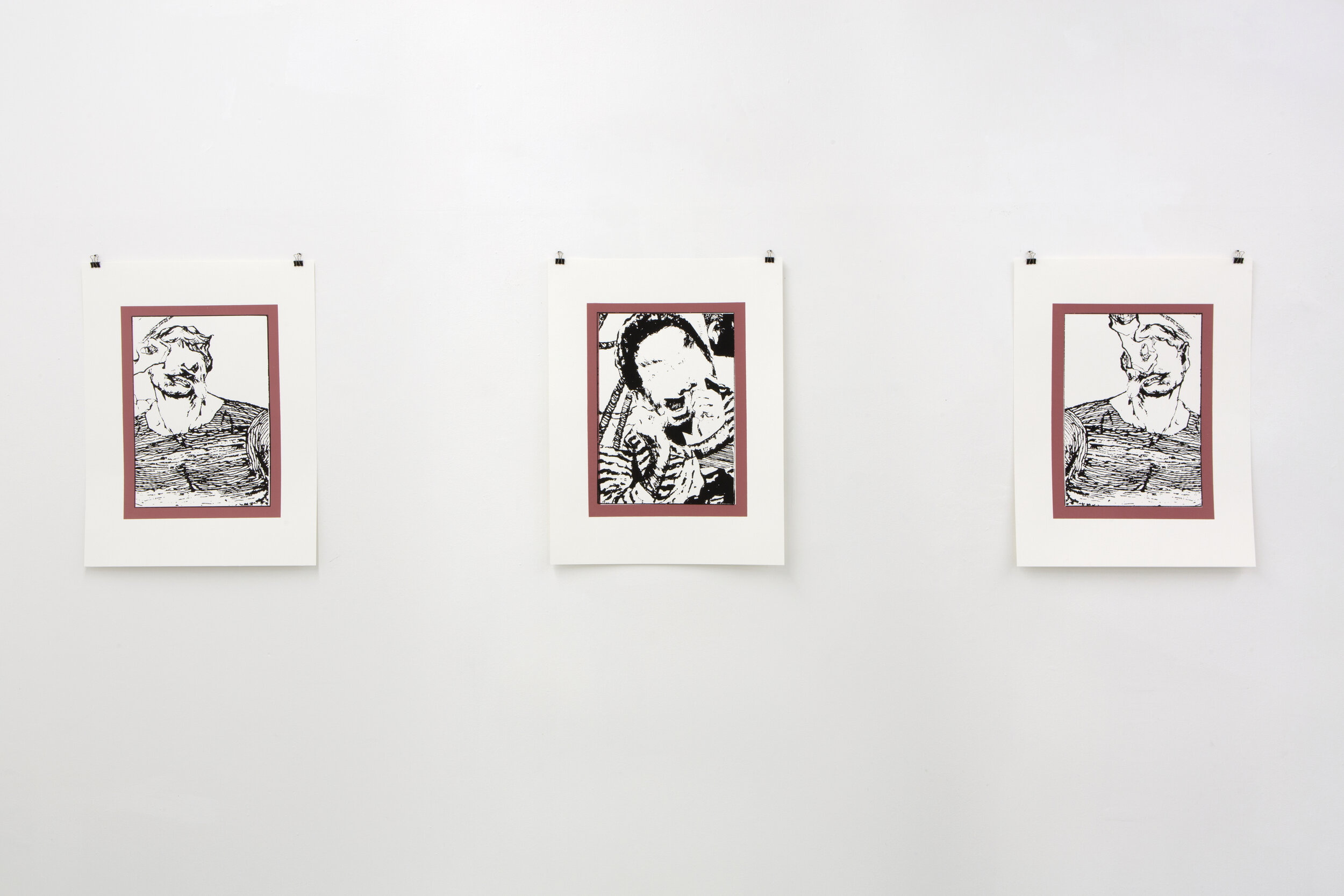
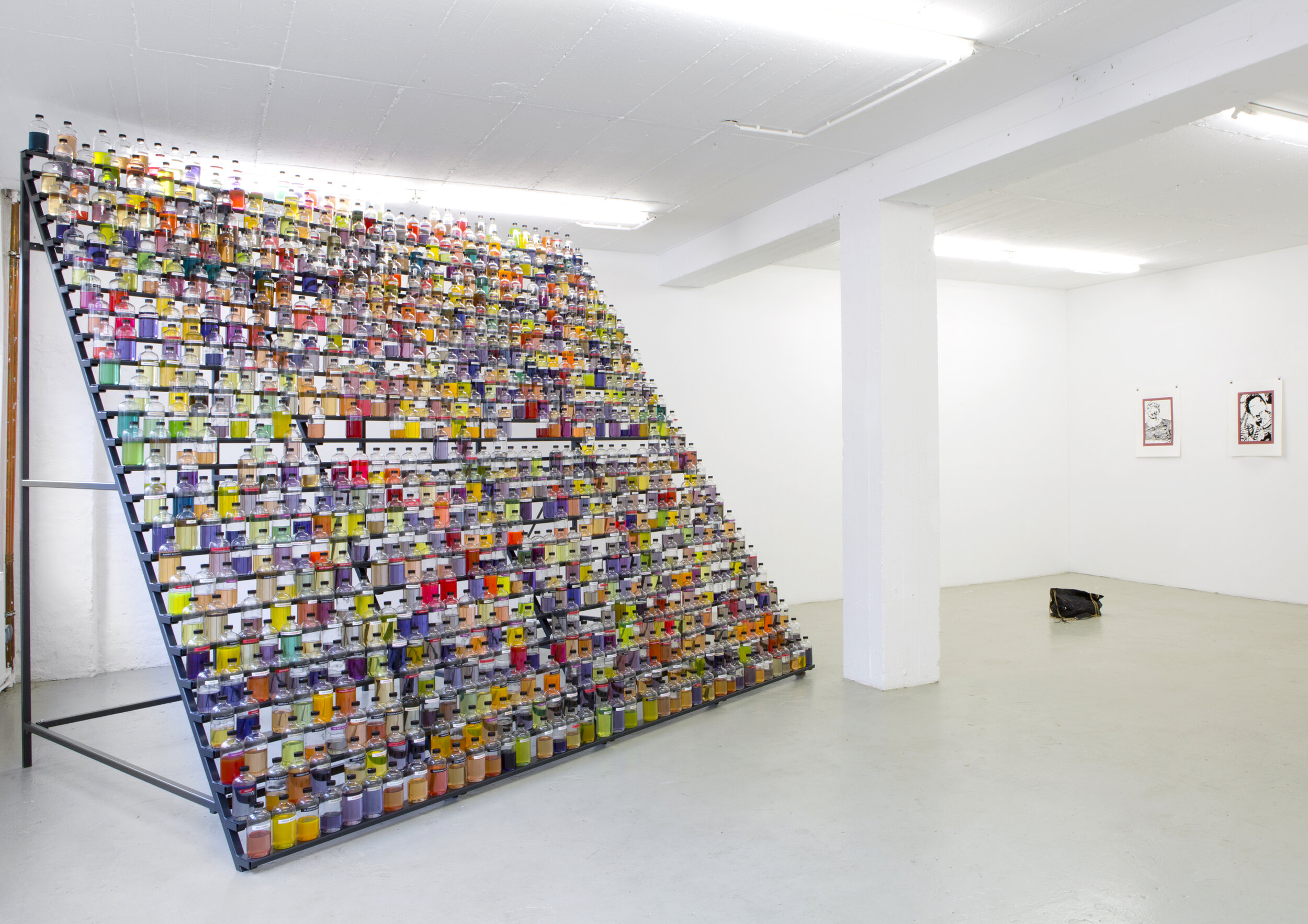
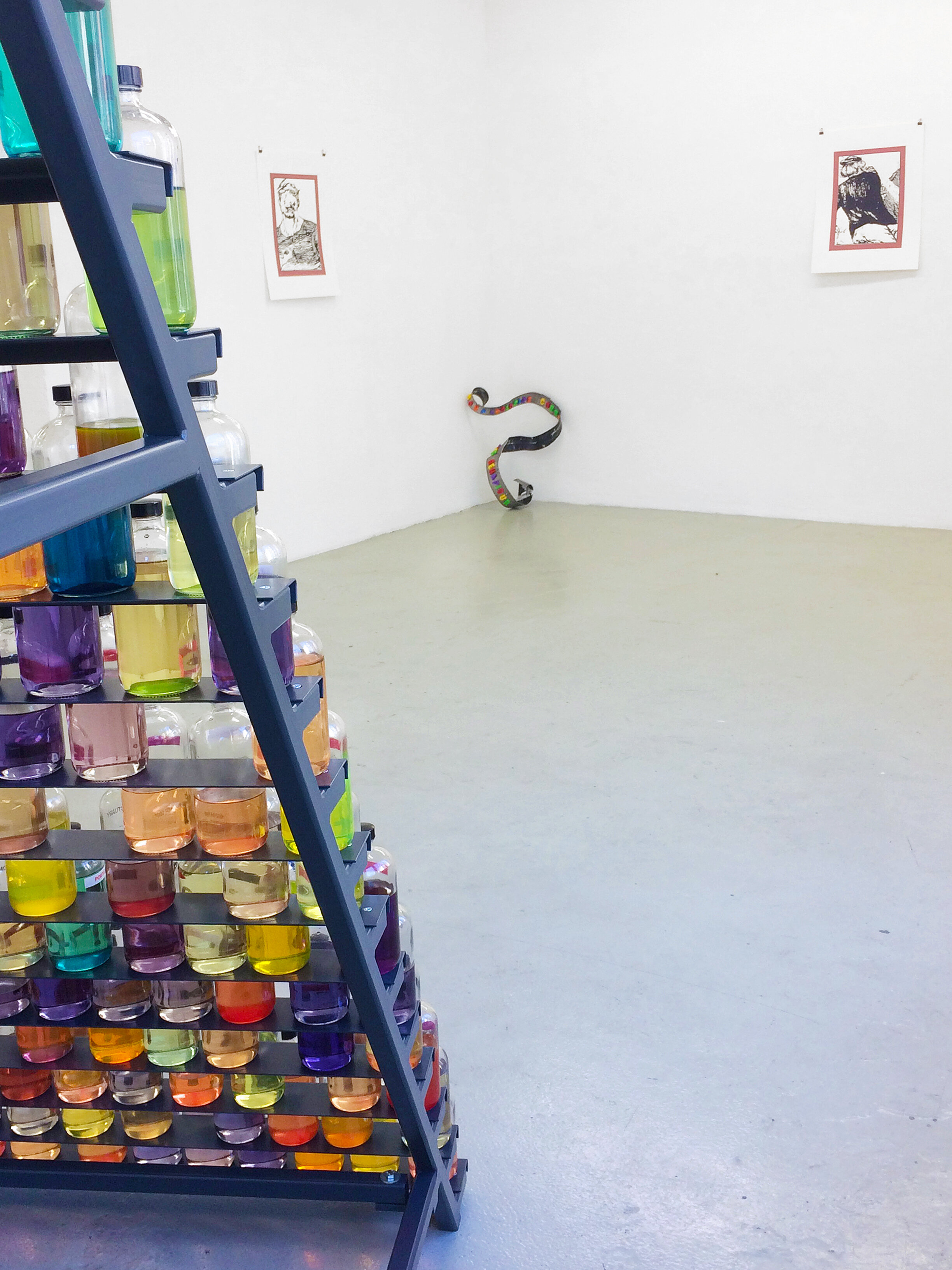
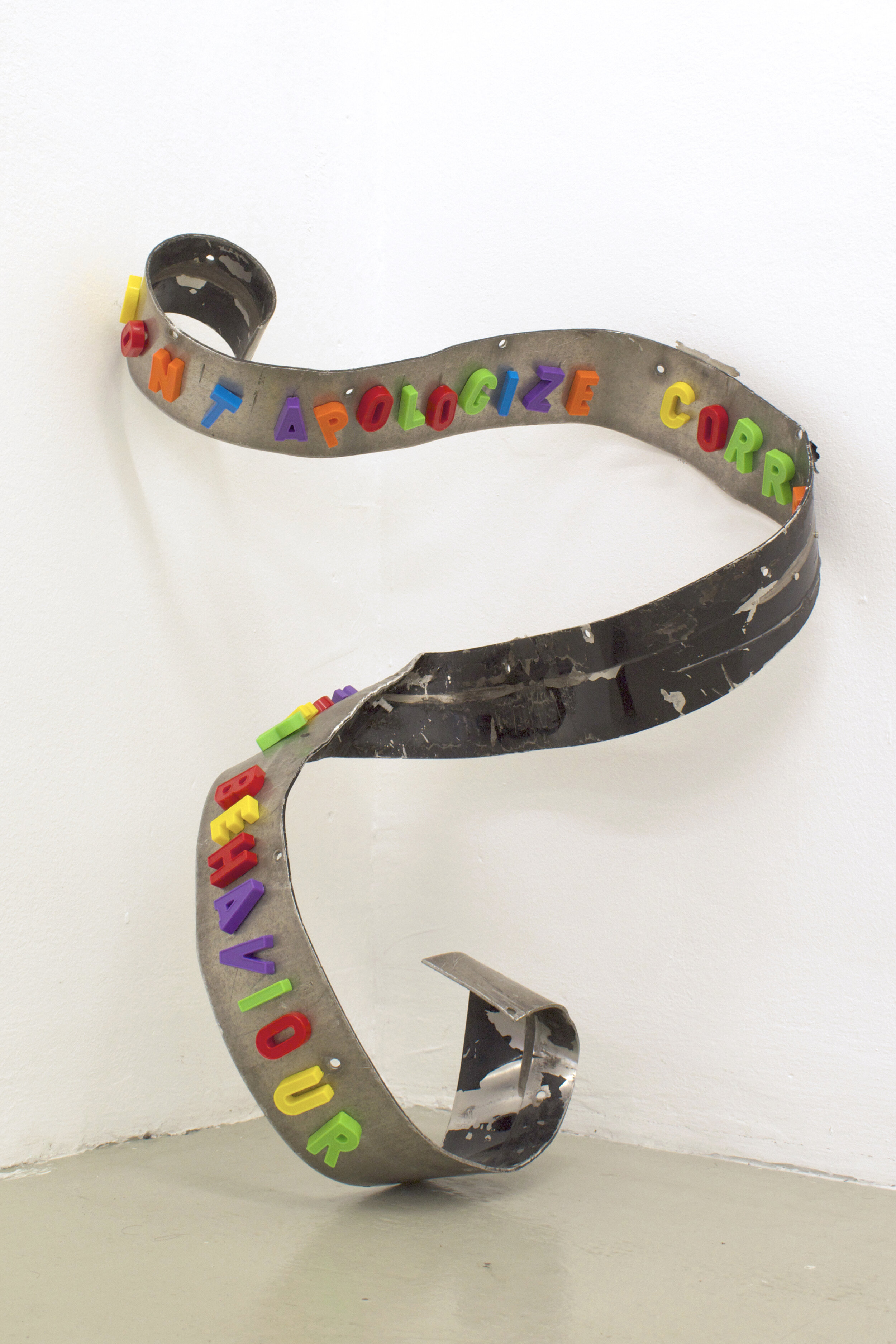
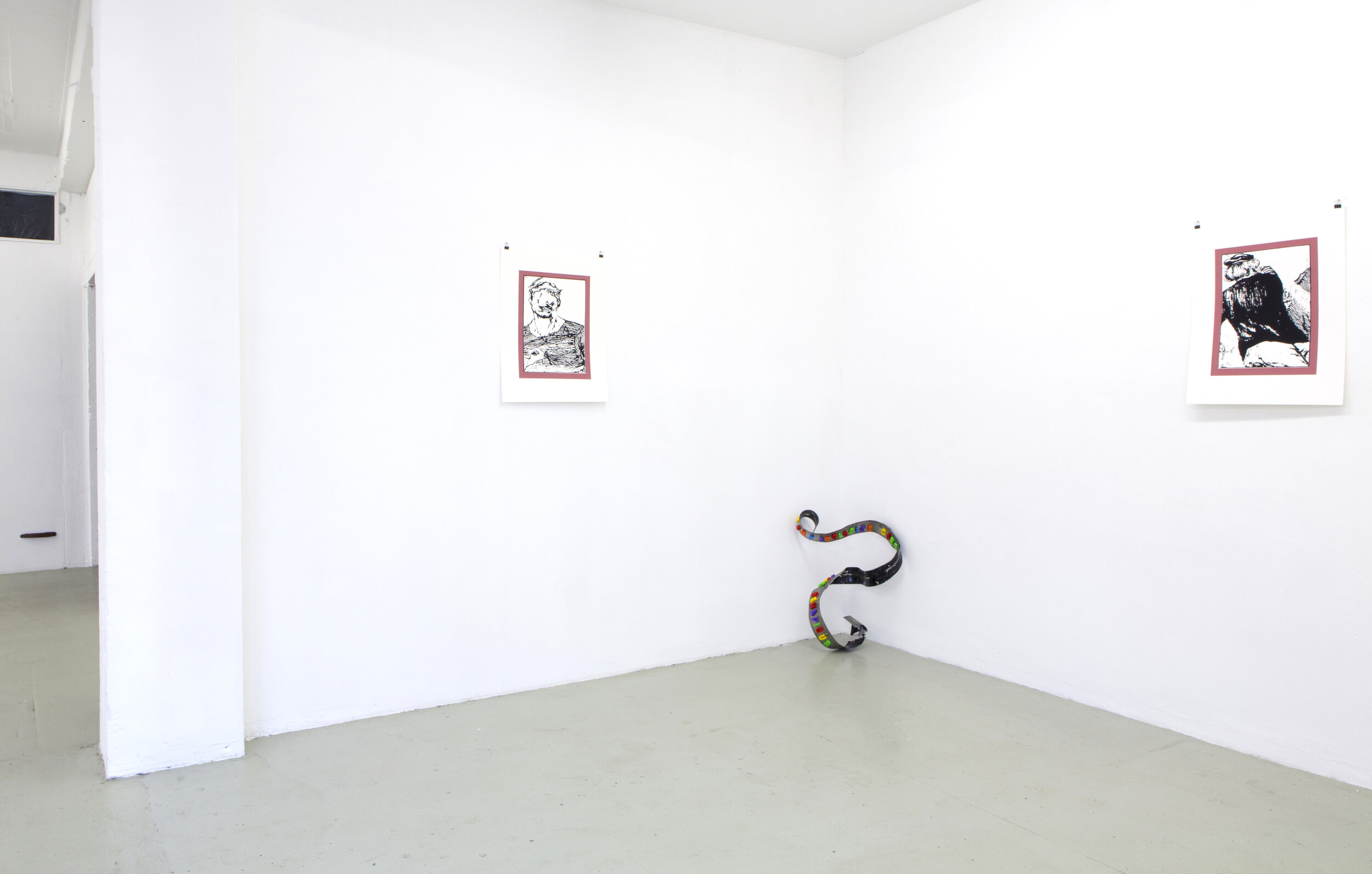



Photo: Simon Vogel, Tamara Lorenz, Selma Gültoprak
Installation view: Martinetz




